TABLE OF CONTENTS
The best choice of a carving knife for any given job depends on the shape of its blade, the material used to make it, and how it fits the individual's needs.
Choosing the right knife is paramount to enhancing your cutlery experience. In this article, we'll discuss important information about carving knives and how to choose the best.
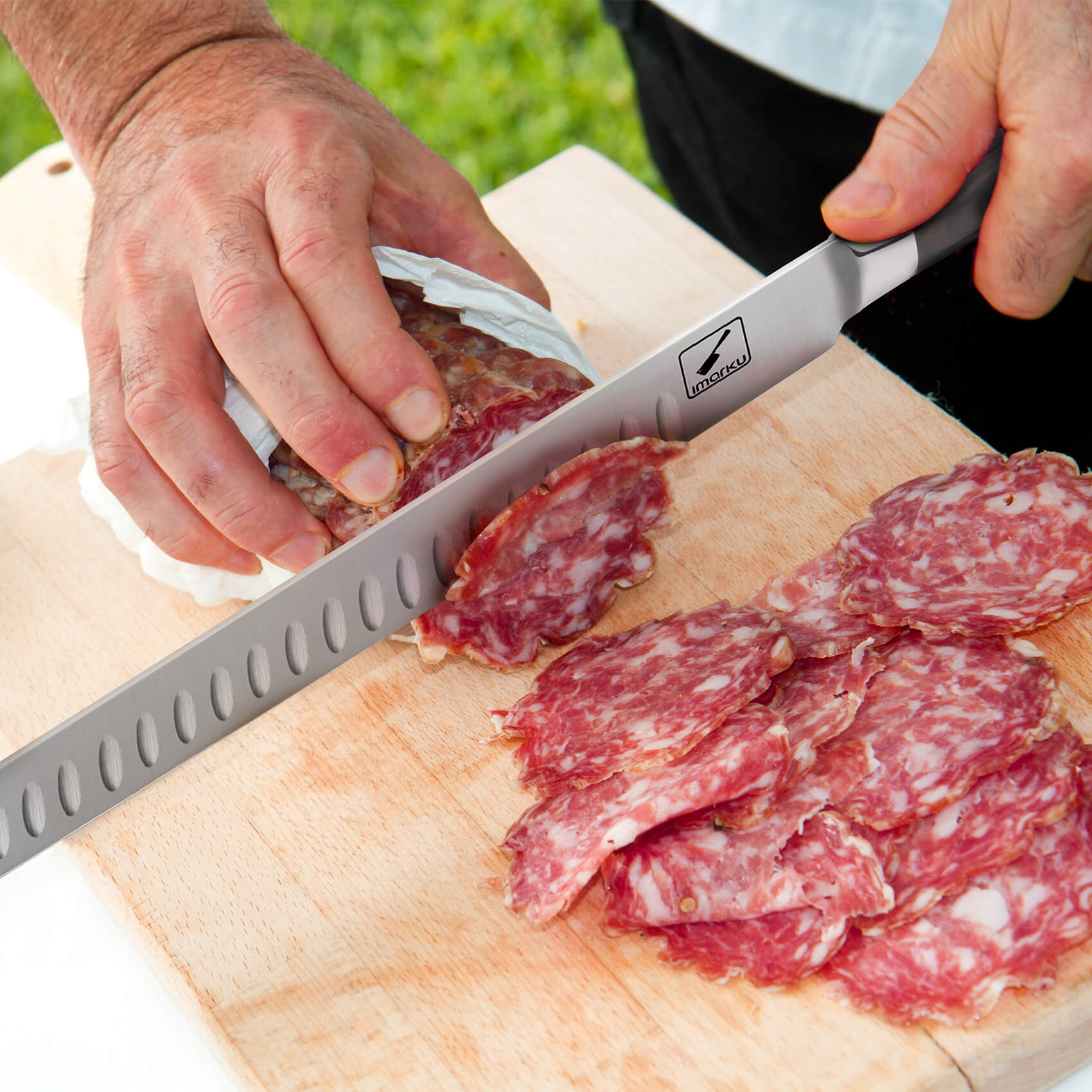
What Is a Carving Knife?
A carving knife is a specialized kitchen knife used to serve thinly sliced or carved roasted meats and fish. It has a long, thin blade, usually serrated to maintain its sharpness and ease cutting through meat and other tough foods.
A carving knife's shape may be likened to that of an adult-sized (8") chef's knife, but with a thinner blade and more serrations. It is typically used in place of a chef's knife because the length and sharpness make it much easier to cut thin slices from a roast without causing significant damage to the meat.
Carving knives usually have wooden handles and metal bolsters between them and the blade for balance and durability. They are generally long but maybe as short as 8 inches for steakhouse use.

How to Choose the Best Carving Knife
Choosing the best carving knife is not as easy as it seems to be. It requires a lot of knowledge and information about carving knives and a proper understanding of how they work. Here are tips to help you choose an ideal carving knife.
Know Types of Knives Available
There are three main types of carving knives available, each of which has its unique features. The three types of knives are:
- The serrated blade knife
- The hollow ground knife
- The straight edge or French knife
Choose the type of knife that best suits your carving projects.
Look for a Knife of the Right Size
The right size is essential since it determines how easily you can handle the knife while carving. You will get tired quickly if it does not support your grip properly and slip from your hands now and then. This may even lead to accidents causing injury to yourself or damage to your work-piece. Therefore, choose the perfect size that fits in perfectly with your hand rather than choosing a bigger one since it provides better comfort while working on longer projects.
Check Out The Shape of the Blade
Carving knives come in various shapes, such as oval, round or triangular blades. These shapes do not affect its cutting performance, but they matter when choosing the right knife for any given job. Some projects require a carving blade to cut round shapes and curves. Such knives work best on meatier cuts such as roasts, turkeys, and hams. On the other hand, a straight edge knife helps cut the bone and slice fish or poultry.

Consider The Knife's Material
Carving knives are either stainless steel or high carbon steel with forged blades that can stay sharp for years.
Stainless Steel
The following are reasons why stainless steel is the best material for a knife:
- This material is rust-resistant
- Easy to clean
- Provides flexibility when working with frozen meats by preventing bending of the blade due to freezing temperatures.
High Carbon Steel
The following advantages make high carbon steel the suitable material for knives:
- High carbon steel knives have a better ability to retain their sharpness for a longer time than stainless ones.
- The handle is easier to grip when working with frozen meats since the material remains flexible even at freezing temperatures.
- More rigid than stainless steel knives making it safer to work with.
- Ability to cut through anything, including bone and frozen meat, because of the blade's hardness.
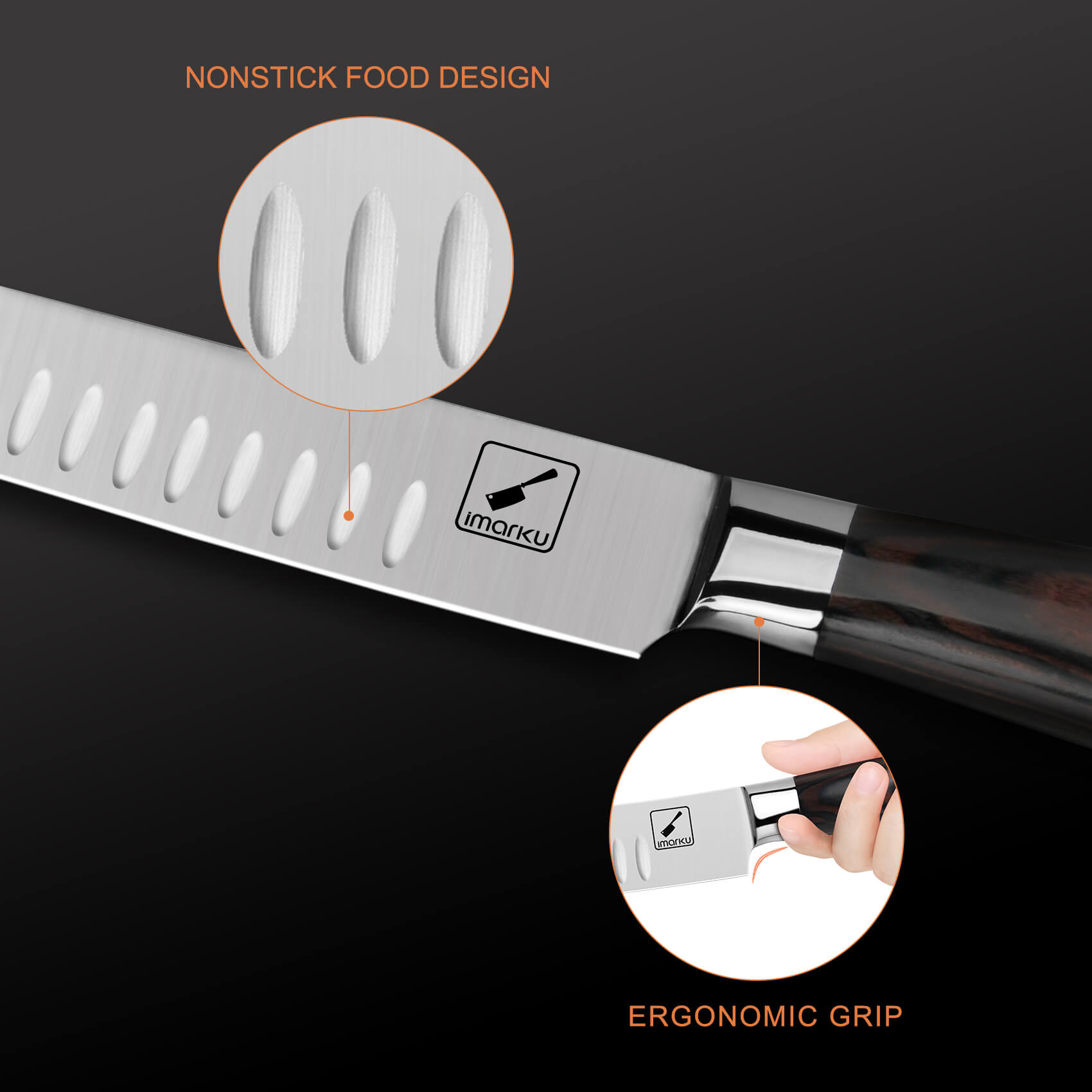
Look for a Knife That Fits Your Budget
Avoid selecting cheap carving knives that are not durable compared to their expensive counterparts. This is because there are chances that you will need to replace it soon due to frequent damages. It is also more likely that a cheaper knife can be more complicated to use and thus limit your creativity when using it. On the other hand, a good knife for carving needs not cost a fortune but should be of high quality and superior design to enhance your experience with it.
Consider Your Needs
Before making any decision, you have to determine what features matter most on your ideal carving knife. Some people may prefer an easier blade sharpening process, while some may want a safer handle design on their knives. Some individuals may look for comfort, while others may choose performance over everything else. The following factors influence the choice of any given knife.
Buy A Knife That Offers Good Value for Money
A good value knife will offer quality performance over its lifetime. At the same time, you should spend very little on maintenance to maintain it in top shape. Therefore, you must choose a knife that offers excellent performance and superb design while reducing the possibility of any issues to a minimum if not eliminated.
The above tips can help you choose the best carving knives to enhance your experience with them, thus creating wonderful pieces of work without tiring or straining your muscles no matter how long you are working on it. Remember to buy only high-quality materials so as not to spend too much on knife repairs.
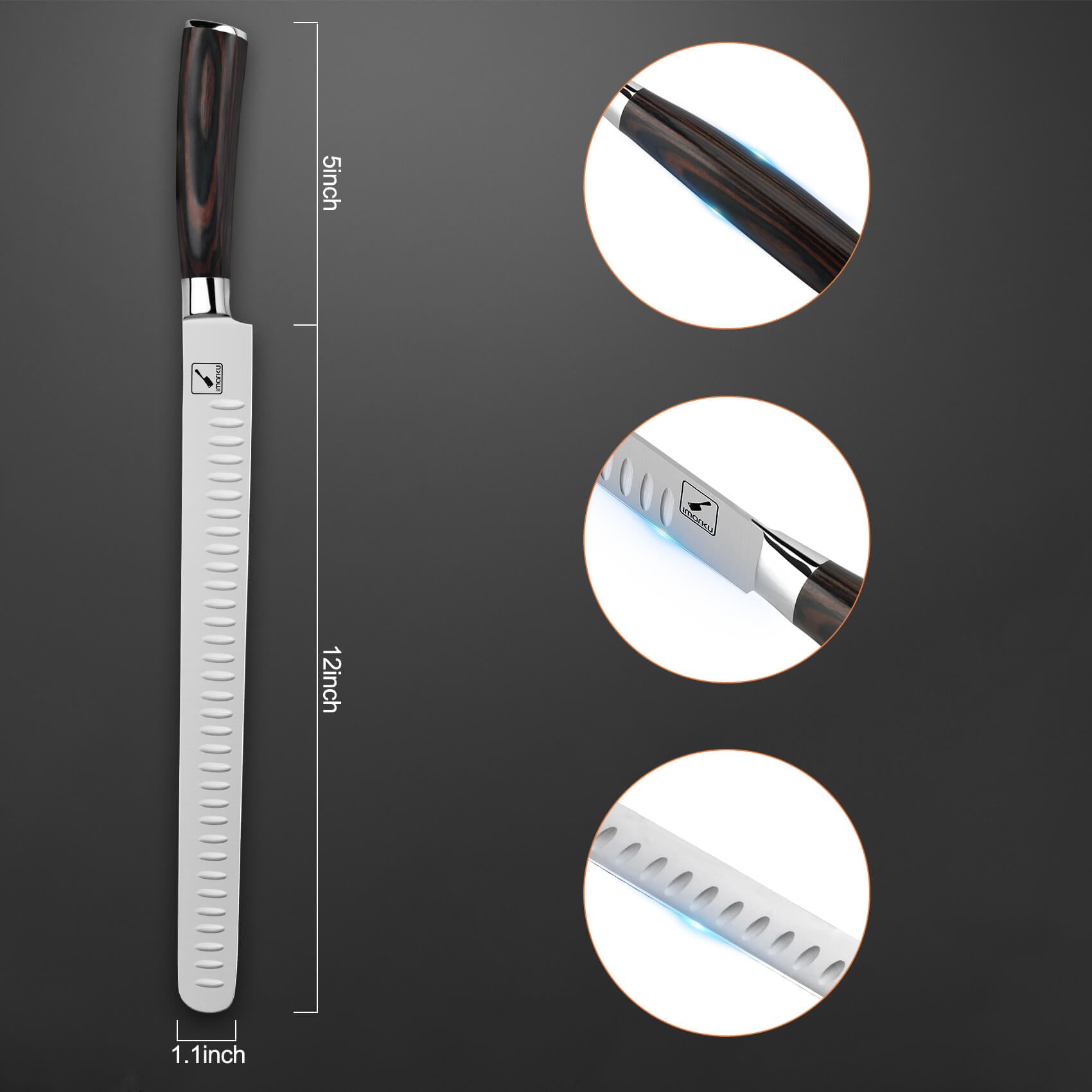
The Best Carving Knives
Are you wondering what knife to buy? Well, here is the best carving knife for you.
Imarku Slicing 12" Carving Knife
Imarku is a brand that specializes in manufacturing high-quality kitchen knives and cutlery for home and professional use. This 12-inch slicing carving knife boasts a carbon steel blade with a comfortable non-slip handle to give you the best slicing experience every time you use it.
It's ideal for cutting roasts, hams, or even frozen meat without warping or bending the blade at all. The long-lasting knife has an ergonomic design to ensure your hand feels comfortable while operating it even after extended periods of operation.
The full tang construction means the body won't crack or break over time as some other brands do, which makes this knife one that will provide service for many years to come.

Carving: 9/10 Cuts fine slices or harder meats easily.
Pros:
- Comfortable non-slip grip to ensure easy use even during prolonged usage periods without hand cramps or loss of grip
- Cuts through the toughest meats like roasts and hams without any problems
- Sturdy full tang construction that does not snap or crack over time like other brands on the market do nowadays
- Fairly wide blade for big pieces of meat like chicken legs and turkey thighs
- Easy to clean after every use
- Long-lasting edges, which ensure long service life if maintained properly by drying, oiling, etc.
Cons:
- 12" blade is not ideal for very thin slices.
Frequently Asked Questions About Carving Knives
Are you buying or using a carving knife for the first time? Well, you probably have some questions about it. Here are some of the frequently asked questions and answers that could help you.

Do I Need To Sharpen The Carving Knife?
You should always ensure that you maintain your carving knife by sharpening it regularly. Sharpening a caving knife will remove the metal from the blade allowing for a sharper edge. Your blade will need to be sharpened around about once a day or every couple of days if you use it frequently. There is no definite rule on when you should sharpen your carving knife. But this depends on how often you use the tool and how much work it has been doing in your kitchen. If, get in touch with an expert who can sharpen your carving knife for you instead of doing it yourself.
How To Care For The Carving Knife?
If you are using your carving knife for regular food preparation, it is important to clean the blade after each use. You should be careful not to let any meat juices on the blade as these may cause corrosion on the metal. Its best practice to dry off the knife with a towel, ensuring that all moisture is removed from the blade before putting it away. It is also advisable to wash your curving knife by hand instead of putting it in the dishwasher. This will ensure that there is no damage done to your curving knives by more aggressive washing methods.
Can I Cut Bone With The Blade of A Carving Knife?
You can easily cut bone with a carving knife blade. It is important not to use the tip of the carving knife when cutting bone, or you may damage your blade. The best place to apply pressure while cutting things like bone, with your carving knife is around 2-3 inches away from the tip of the blade on either side of it.


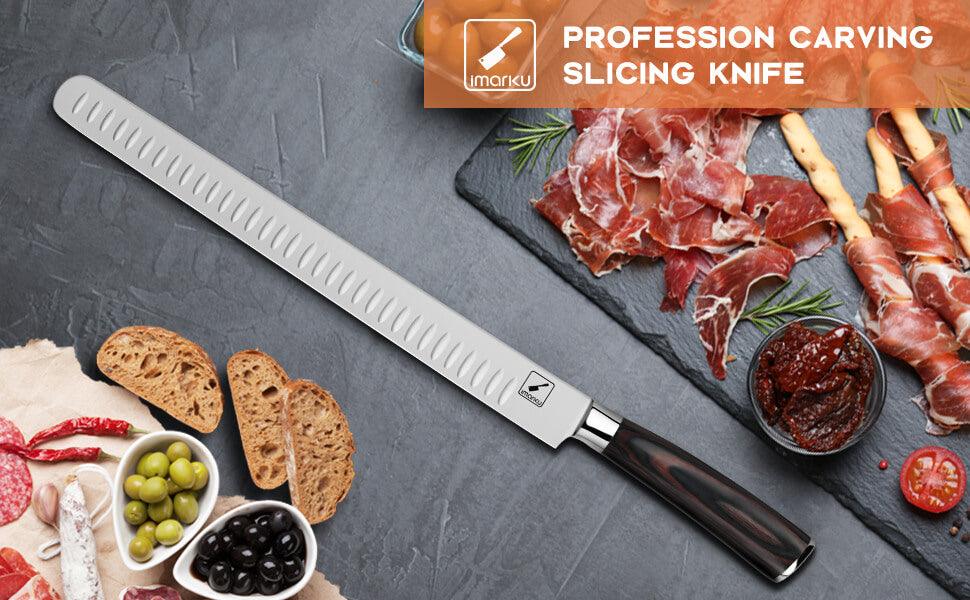
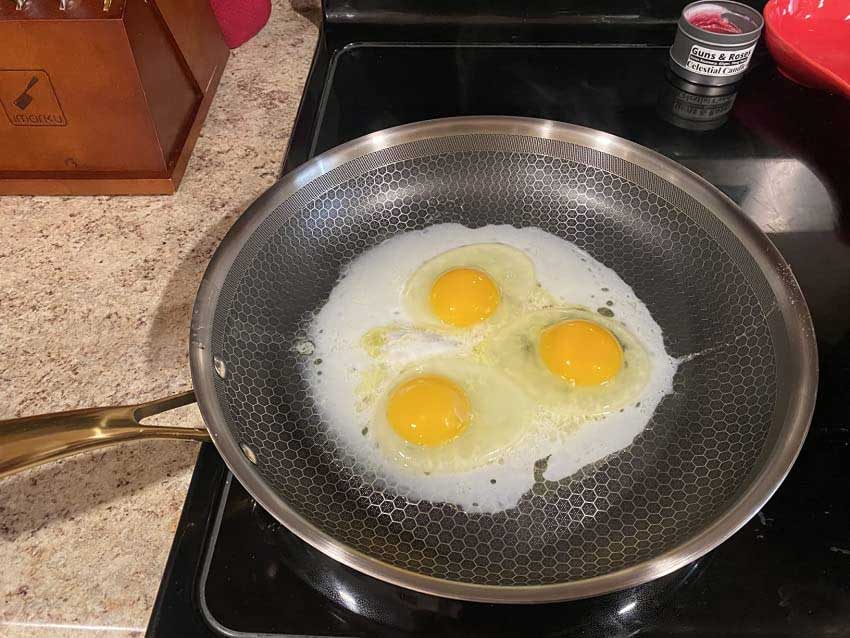
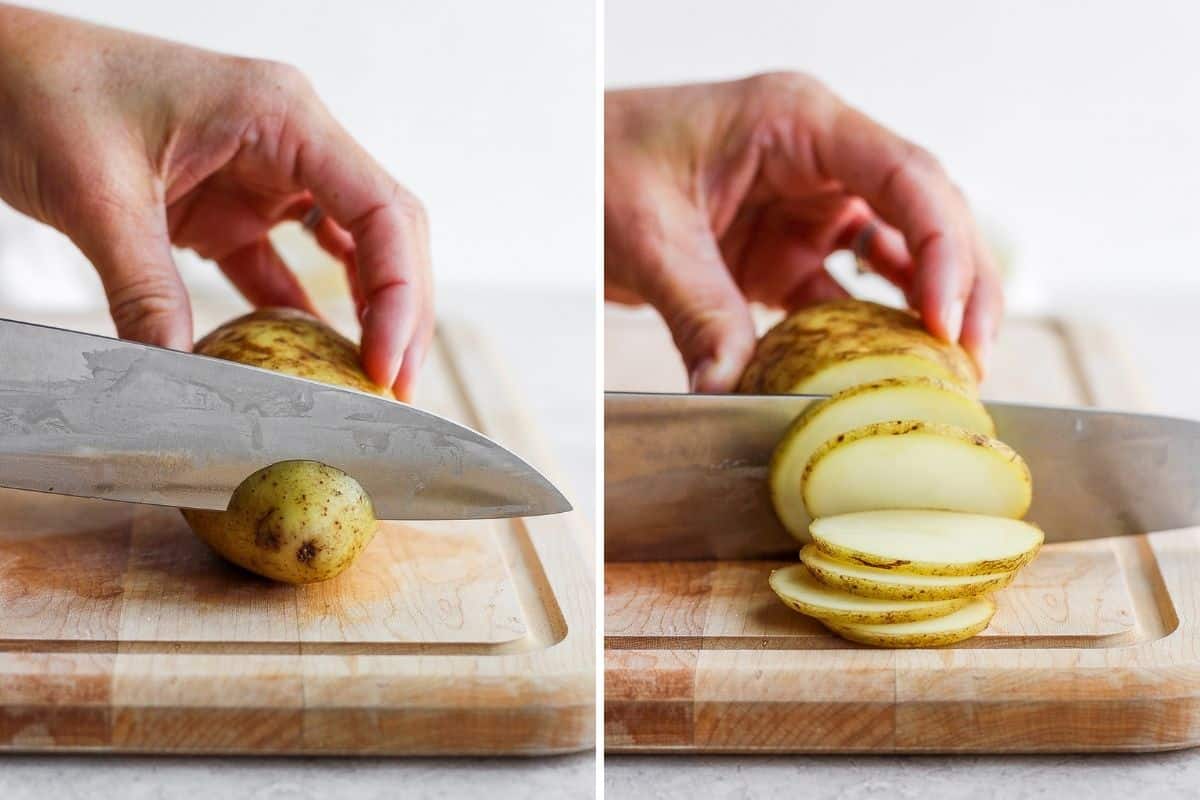

















Leave a comment
All comments are moderated before being published.
This site is protected by hCaptcha and the hCaptcha Privacy Policy and Terms of Service apply.